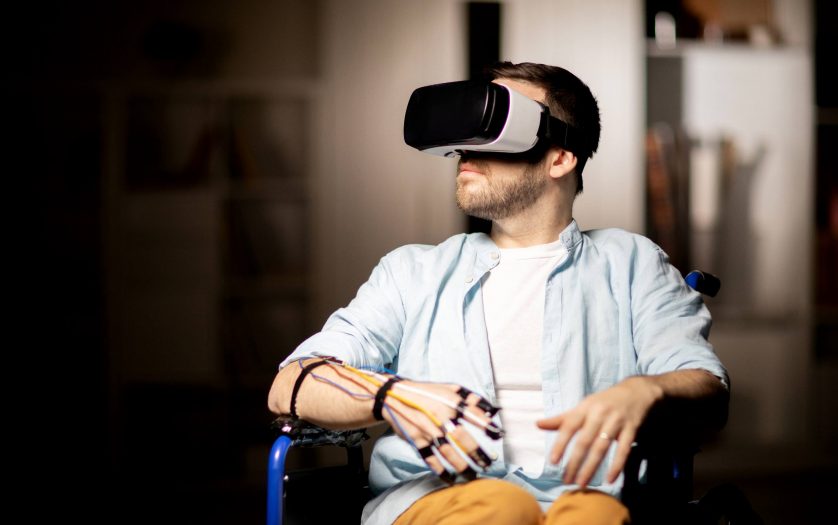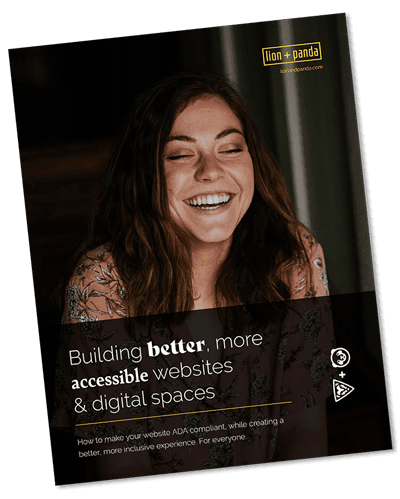As we mark Global Accessibility Awareness Day #GAAD on May 18th, 2023, it’s time to reflect, appreciate, and further advocate for digital accessibility. Digital accessibility is more than just a technological advancement. It’s a path to inclusivity, a channel to express our diversity, and a platform to empower all voices, regardless of physical or cognitive abilities. This day serves as a reminder of our collective responsibility to foster an accessible digital world, because the internet is for everyone.
The State of Digital Accessibility in 2023
We’ve known the importance of digital accessibility for decades, and have laws and guidelines for nearly that long. So how are we doing in 2023? The world has made great strides! But we still have a long way to go.
In a study of 1 Million home pages:
92%
Had At Least One WCAG 2.0 Failure
61
Errors On Average
Source: According to WebAIM Million Report
Ironically, the easiest-to-fix issues are often the most prevalent and make up the vast majority of accessibility guidelines failures.
Causes of Most Common Accessibility Failures (% of Home Pages)
86%
Low Contrast Text
66%
Missing Image Alt Text
60%
54%
Source: According to WebAIM Million Report
The Legal Importance and Impact of Digital Accessibility
In the pursuit of a globally inclusive society, laws and regulations have been established to ensure digital accessibility. This legal framework not only mandates adherence to accessible design but also fosters an environment where businesses and organizations can be held accountable for neglecting these standards. From the Americans with Disabilities Act (ADA) to the Web Content Accessibility Guidelines (WCAG), these laws not only protect the rights of individuals with disabilities but also pave the way for a more inclusive digital world.
The laws can be vague and the guidelines are hard to understand. It is important to work with a Digital Accessibility Specialist failure with your country’s laws and requirements such those as Lion + Panda.
Digital Accessibility: Enhancing Lives Personally
Digital accessibility is more than just a legal requirement—it’s a personal lifeline for many. It provides individuals, regardless of ability, the tools to learn, work, and socialize in ways that may not have been possible otherwise. Imagine the transformational power of a screen reader for a visually impaired person or captioning services for someone hard of hearing.
Push your definition of a disabled person to those with lesser talked about disabilities such as color blindness, ADHD, or even a broken arm and you’ll realize the pool of people you are reaching out to (or accidentally shutting out) is much larger than you first imagined. 1 billion people worldwide! In fact, Nearly everyone will experience at least a temporary or situational disability sometime in their lives. These tools aren’t just about surfing the web; they’re about empowering people to live more independently, pursue their interests, and connect with the world on their terms.


Political Impact of Digital Accessibility


In the realm of politics, digital accessibility plays a vital role. It ensures that everyone, irrespective of their physical or cognitive abilities, has access to essential information and the ability to participate in the democratic process. Whether it’s reviewing policies, engaging with elected officials, or casting a vote online, digital accessibility is a cornerstone of modern political engagement. Inclusivity in the digital space is not just about technology; it’s about safeguarding democracy and empowering citizen participation.
Empowering Voices of All Abilities
In an increasingly digital world, the ability to communicate, express opinions, and share experiences online is fundamental. Digital accessibility ensures that everyone, no matter their level of ability, can have a voice. It bridges gaps, fosters dialogue, and empowers individuals to contribute to the global conversation. When we ensure our digital platforms are accessible, we are not just complying with laws, we’re upholding the belief that all voices matter.
Pushing the Boundaries: Accessibility in Cutting-Edge Tech


The frontier of technology is ever-expanding, with innovative fields like Virtual Reality (VR), Artificial Intelligence (AI), and voice-based interfaces revolutionizing the way we communicate and interact. It’s crucial that we consider digital accessibility as we venture into these new territories.
For instance, VR holds immense potential for creating immersive experiences that are accessible to all. With AI, we can develop more intelligent assistive technologies, such as predictive text or image recognition for visually impaired users. Voice-based interfaces, like smart speakers, can transform the way people with motor or cognitive disabilities interact with technology.
However, it’s important to note that these advancements also pose new challenges to digital accessibility. We need to ensure that while we push the boundaries of technology, we don’t inadvertently create new barriers.
Internet for Everyone: A Human Right
As we navigate through the digital age, access to the internet has transcended from a luxury to a necessity and is now recognized as a human right. The internet should be for everyone, without exception. It’s a vital hub for education, employment, healthcare, social interaction, and more. Digital accessibility is not merely an act of compassion; it’s a commitment to equality, ensuring that this global resource truly serves all of humanity.
We’re Here To Help With Our FREE Guide
As we celebrate Global Accessibility Awareness Day, let us remember that digital accessibility is more than just a checkbox—it’s a mission to create an inclusive world where everyone has the opportunity to participate and thrive.


Get our FREE guide to ADA and WCAG 2.1 compliance
Start your journey toward digital inclusivity today. Download Lion + Panda’s comprehensive guide to ADA and WCAG 2.1 compliance. This whitepaper will equip you with the understanding and tools needed to create an accessible digital presence for all. Because everyone deserves a seat at the digital table. Let’s Access The Web Together.